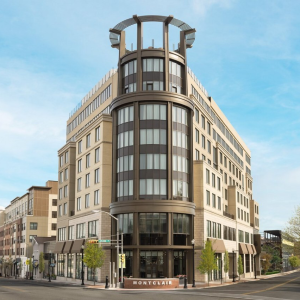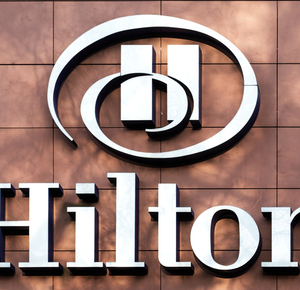By Allison Tardif, Industry Advocacy Manager, AVIXA
How will you feel the next time you walk into a hotel lobby? Nervous? Unsure how to social distance? Soon, hotels will likely need to address the concerns of returning customers, as states and airlines reopen. I recently spoke with Jeff Mikes, business lead at experience design studio Second Story, to learn more about his team’s work in this area. Mikes explained that, despite the many live events and experiences that have recently gone digital, people still have an emotional and spiritual need to gather in groups and to see new things through travel. People will travel and stay in hotels again.
As the hotel and hospitality industries start welcoming guests back into their properties, their operations have to adapt to the new reality of a world facing a potentially long recovery from the novel coronavirus COVID-19. Technology, especially innovative zero-touch solutions, will be a critical component of adapting these spaces. Experience design firms, audiovisual technology providers, and hotels will need to collaborate on designing the future of hospitality spaces.
The need to adapt how spaces operate and to design for the reality we now live in is the primary focus these days at Second Story. While the current context for the work may be new, Second Story’s emphasis on human emotion is not. The studio has always approached client work empathetically, by considering the complete guest experience from beginning to end. The array of services they offer –from innovation workshops and environment design to content creation, strategy, prototyping, and creative technology applications – channels their emotional intelligence into effective business solutions.
Though Mikes and his team have already put an incredible amount of thought into how their hospitality clients can design for the needs of guests, their work on that front may be just beginning. According to Mikes “our spaces weren’t designed for life under the curve,” — meaning the period of time where we know the danger is still out there, but the rate of new infections is trending down so we do feel “safe enough” to go out again. Until new vaccines and treatments are developed and widely available, that is the reality we will be living in.
Mikes and the Second Story team call their design response to the pandemic “Adaptive Spaces,” and they are already talking to top executives at major hotel brands about how to apply the framework to reopen their properties and attract guests. Adaptive Spaces goes well beyond the now familiar band-aid approach that many essential businesses used during the shelter-at-home period. Those “bubble gum and duct tape” solutions – [HW-A1] homemade signs, chalked markings to keep customers six feet apart, curbside-only service – need to evolve into thoughtfully designed environments that accommodate social distancing and the emotional needs of guests and customers. Adaptive Spaces views guest experience design through five lenses: emotions, space, communications, systems, and zero-touch technology.
Emotions and Communications
One of the biggest shifts that brands of all kinds need to make is to understand the current emotional state and new emotional needs of their customers. While a year ago, most hospitality brands were appealing to people at the top of Maslow’s hierarchy, they now need to demonstrate and communicate how they are satisfying the needs at the bottom of that pyramid. No one can think about self-actualization if they do not feel safe.
Hotels need to map the guest’s journey through their spaces and note the emotions people might feel at each point. How will they feel at check-in? As they enter the room? If they feel confused, how do we help them feel confident instead? If they feel frustrated, how do we make them happy?
Clear and transparent communication is critical to managing the customers’ emotions as they move through the property. Digital signage and wayfinding technologies can play a critical role in helping people understand what behavior is expected when they walk back into a hotel for the first time. Digital signage, with a calming design that explains hygiene protocols, could put a nervous guest at ease. A guest who feels confused about how contactless check-in works could be made to feel confident by signage that clearly explains the new process.
Space, Systems, and Zero-Touch Technologies
The space, as in the actual architecture and physical design of the hotel property, also needs to be reconsidered. Are there locations where people will naturally congregate? How many surfaces does a guest typically touch? How could the space make social distancing feel effortless? Facilitating six feet of distance among guests might mean a spatial rework, like tearing down a wall, or it could be a simpler intervention, like adding footprint markers to an elevator and additional markers where to stand inside it. Touchless solutions, retrofitted over existing touchscreens and kiosks, also come into play.
Systems and familiar processes – like how people check in, how they get food while on the property, how they use the fitness center, and so on – must be reexamined with safety and social distancing in mind. For example, maybe the buffet is eliminated and contactless delivery to rooms is added.
Zero-touch used to be a fun novelty that occasionally popped up in retail or hospitality. Now, it could play a major role in saving these industries. Most touchscreens can be retrofitted to be either gesture- or voice-controlled. Voice control is evolving to be more practical for public spaces with the emergence of technology that blocks ambient noise.
To bring customers back, it’s time for hotels to stop improvising and start adapting to the new reality. Mikes predicts that once a few major brands invest in these solutions and figure out what works best, we will see some standardization across the industry.






